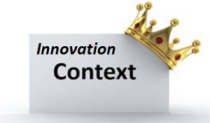
Any innovation common language needs working upon. It firstly needs recognition it is in our best interests to find a common point. It needs to be relevant to each of us, it must be current, appropriate, accurate and highly visible throughout the entire organization. It also needs to be allowed to grow and flourish, to evolve and become the lingua franca of all our innovation work. It needs building and constructing in conscious ways and design.
Let’s step back just for one minute, these ‘sentiments’ are fine, yet we actually do, seriously lack a common language for innovation and we should find the ways and the means to change this. It holds innovation back significantly. It can’t continue in a world of greater networking and collaboration.
Languages unites us or keeps dividing us
Language can have the power to unite us or potentially divide us. Developing a language to unite us in our innovation efforts goes some way to reduce disagreements and egos, to qualify individual interpretation or bias, often a key inhibitor that can block a team’s success. It lays in a common foundation. It builds confidence and understanding.
Once we have a common language, we can set about building and creating a more robust innovation management system. One that builds on this framework so it can relate to the relevant context, conditions, and environment for innovation, to offer within this building block, the common identity.
These identifiers can build into better understanding how to structure governance, process, and functional structures, to build a culture that is responsive as ‘they’ can identify a need for a common cause of understanding. It is in this central innovation language that becomes our clear unifying context, the enabler, and sense of personal identity with the purpose of what we are wishing to achieve. Continue reading “We are in need of a common language for innovation”

